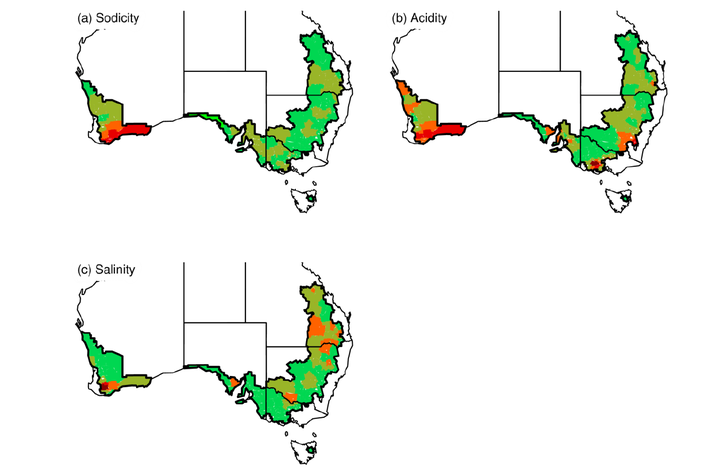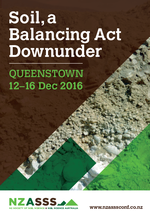Costs of edaphic stress to the Australian grains industry
 Yield gaps due to (a) sodicity, (b) acidity, and (c) salinity at SA2 level (Orton et al., 2018).
Yield gaps due to (a) sodicity, (b) acidity, and (c) salinity at SA2 level (Orton et al., 2018).Compaction, soil salinity, sodicity, acidity, and alkalinity, and toxicities of boron, chloride and aluminium are important edaphic constraints to grain production on many cropping soils in Australia. Each soil constraint has different causes and treatments. However, the management of each soil constraint presents an economic opportunity. Despite their significance, the available information on the extent and impact of these constraints on the grains industry is mostly based on extrapolations from soil surveys and expert opinion from individual regions. There is considerable variation in the existing information on the costs of each of the soil constraints to Australian agriculture. The Australian grains industry needs accurate information on the costs of these constraints at a national scale to guide management decisions on remediation to minimise productivity losses and setting of priorities for the selection of traits for the development of adapted crop germplasm.
Estimating the severity of soil constraints, and their impact on plant productivity and management is a very complex issue. Several surface and subsoil properties interact with each other to determine the local environment for root growth at a given time. Rarely do the various soil constraints occur independently. Moreover, the variable distribution of soil constraints, both spatially within a paddock, across the landscape and with depth in the soil profile, and the complex interactions that exist among the various physical and chemical soil properties, makes it difficult to determine which constraint is the major limitation to crop production. In most cases, the impact of soil constraints has been evaluated separately in both surface and subsoils and often there is a debate about the relative importance of different soil constraints to agricultural productivity. Identification of the most limiting constraint and its interaction with other factors is a first step in planning for soil management and the selection of traits for the development of adapted crop germplasm.
This project:
- quantified and developped a national map of forfeited grain yields due to specific soil constraints including compaction, sodicity, salinity, acidity and elemental toxicities such as boron, chloride and aluminium at the Statistical Local Area (SLA) level, and
- developped a framework for assessing the economic-benefit of ameliorating and /or managing specific soil constraints, and for the selection of traits to establish tolerance to constraints in adapted genetic backgrounds
Funded by

Reference:
Orton, Thomas G., Mallawaarachchi, Thilak, Pringle, Matthew J., Menzies, Neal W., Dalal, Ram C., Kopittke, Peter M., Searle, Ross, Hochman, Zvi, & Dang, Yash P. 2018. Quantifying the economic impact of soil constraints on Australian agriculture: A case-study of wheat. Land Degradation & Development, 29(11), 3866–3875. doi:10.1002/ldr.3130.



